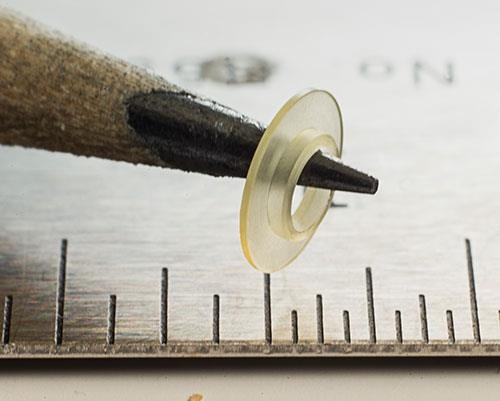Fundamentals Can Go a Long Way
For this shop, machining small parts from plastic is largely about applying the basics on a smaller scale.

When I called Chris Marchand of East Coast Precision Manufacturing to ask about the secret to machining small, complex plastic parts like the one shown above, I was somewhat surprised by his answer: a calm, patient mindset; a solid setup; a careful, light touch; and a deep understanding of machining fundamentals.
I’m not sure what I expected to hear, exactly. I suppose I expected something that small to require some special strategy or equipment beyond just being careful and patient. In fact, aside from two Swiss-type lathes, the machines at the 5,600-square-foot, Connecticut shop would be at home in virtually any other manufacturing operation, even though the shop specializes in this work. According to Mr. Marchand, cutting such small geometries is, in many ways, an exercise in applying the same principles used for conventionally sized work, just at a smaller scale and a great deal more carefully.
That’s not to say that small parts don’t involve any unique considerations. Yet, the fact that fundamentals were the first thing that came to Mr. Marchand’s mind illustrates just how far fundamentals can go. That’s a lesson any manufacturer can take to heart.
In fact, many of the challenges this shop deals with relate more to material than size. “The more I think about it,” Mr. Marchand said after further questioning, “the more I realize just how focused we are on controlling chips.” This article details a few of the shop’s go-to strategies for ensuring clean, burr-free cutting of some of the softest materials in the industry.
Related Content
-
3 Tips to Accelerate Production on Swiss Lathes with Micro Tools
Low RPM lathes can cause tool breakage and prevent you from achieving proper SFM, but live tooling can provide an economical solution for these problems that can accelerate production.
-
Where Micro-Laser Machining Is the Focus
A company that was once a consulting firm has become a successful micro-laser machine shop producing complex parts and features that most traditional CNC shops cannot machine.
-
Watchmaking: A Machinist’s View
Old-world craftsmanship combines with precision machining on a vertical machining center and Swiss-type lathe to produce some of the only U.S.-made mechanical wristwatch movements.
.jpg;maxWidth=970;quality=90)




.jpg;maxWidth=300;quality=90)




.png;maxWidth=300;quality=90)


.jpg;maxWidth=970;quality=90)